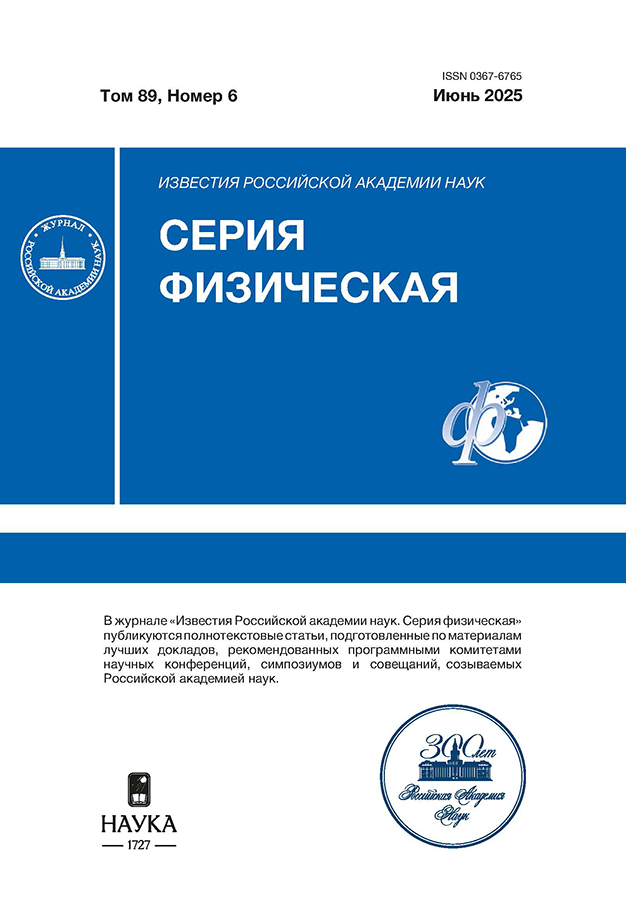Эффективность механизмов формирования спорадических форбуш-понижений
- Авторы: Петухова А.С.1, Петухов И.С.1, Петухов С.И.1
-
Учреждения:
- Институт космофизических исследований и аэрономии имени Ю.Г. Шафера Сибирского отделения Российской академии наук – обособленное подразделение Федерального государственного бюджетного учреждения науки Федерального исследовательского центра “Якутский научный центр Сибирского отделения Российской академии наук”
- Выпуск: Том 87, № 7 (2023)
- Страницы: 1035-1037
- Раздел: Статьи
- URL: https://cardiosomatics.ru/0367-6765/article/view/654363
- DOI: https://doi.org/10.31857/S0367676523701843
- EDN: https://elibrary.ru/OSNZZJ
- ID: 654363
Цитировать
Полный текст
Аннотация
Из измерений мировой сети нейтронных мониторов в период 1996–2018 гг. выявлено 31 сильное форбуш-понижение (>5%), удовлетворяющих принятому критерию отбора событий. Методом наложения эпох определены согласованные пространственные распределения параметров солнечного ветра и понижения плотности космических лучей. Установлено, что вклады механизмов формирования форбуш-понижения сильно различаются в 2-х группах событий. Различие может быть обусловлено тем, что формирование форбуш-понижения в одной группе происходит в лобовой части, а в другой группе в периферийной части возмущения.
Об авторах
А. С. Петухова
Институт космофизических исследований и аэрономии имени Ю.Г. ШафераСибирского отделения Российской академии наук – обособленное подразделение
Федерального государственного бюджетного учреждения науки Федерального исследовательского центра
“Якутский научный центр Сибирского отделения Российской академии наук”
Email: i_van@ikfia.ysn.ru
Россия, Якутск
И. С. Петухов
Институт космофизических исследований и аэрономии имени Ю.Г. ШафераСибирского отделения Российской академии наук – обособленное подразделение
Федерального государственного бюджетного учреждения науки Федерального исследовательского центра
“Якутский научный центр Сибирского отделения Российской академии наук”
Автор, ответственный за переписку.
Email: i_van@ikfia.ysn.ru
Россия, Якутск
С. И. Петухов
Институт космофизических исследований и аэрономии имени Ю.Г. ШафераСибирского отделения Российской академии наук – обособленное подразделение
Федерального государственного бюджетного учреждения науки Федерального исследовательского центра
“Якутский научный центр Сибирского отделения Российской академии наук”
Email: i_van@ikfia.ysn.ru
Россия, Якутск
Список литературы
- Kilpua E., Koskinen H.E.J., Pulkkinen T.I. // Living Rev. Solar Phys. 2017. V. 14. No. 1. P. 5.
- Lockwood J.A., Webber W.R., Debrunner H. // J. Geophys. Res. 1991. V. 96. P. 11587.
- Krittinatham W., Ruffolo D. // The Astrophys. J. 2009. V. 704. No. 1. P. 831.
- Benella S., Laurenza M., Vainio R. et al. // The Astrophys. J. 2020. V. 901. P. 21.
- Laitinen T., Dalla S. // 43rd COSPAR Sci. Assembly. (Sydney, 2021). Art. No. 866.
- Петухов И.С., Петухов С.И. // Изв. РАН. Сер. физ. 2015. Т. 79. № 5. С. 694; Petukhov I.S., Petukhov S.I. // Bull. Russ. Acad. Sci. Phys. 2015. V. 79. No. 5 P. 640.
- Petukhova A.S., Petukhov I.S., Petukhov S.I. // The Astrophys. J. 2019. V. 880. P. 17.
- Petukhova A., Petukhov I., Petukhov S. // Space Weather. 2020. V. 18. Art. No. e2020SW002616.
- Badruddin, Venkatesan D., Zhu B.Y. // Solar Phys. 1991. V. 134. P. 203.
- Richardson I.G., Cane H.V. // Solar Phys. 2011. V. 270. No. 2. P. 609.
- Белов А.В., Абунин А.А., Абунина М.А. и др. // Изв. РАН. Сер. физ. 2015. Т. 79. № 5. С. 691; Belov A.V., Abunin A.A., Abunina M.A. et al. // Bull. Russ. Acad. Sci. Phys. 2015. V. 79. No. 5. P. 637.
Дополнительные файлы











